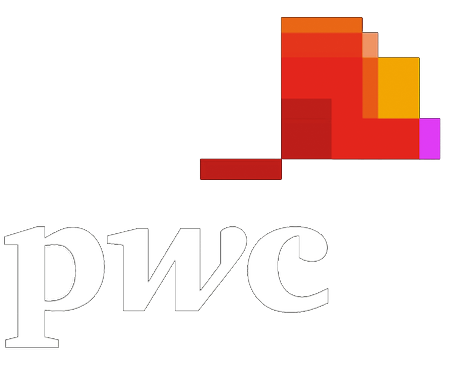SAP Profitability Analysis
Filter By
Browse By
- SAP Analytics and AI
- SAP Application Development and Integration
- All SAP Application Development and Integration
- SAP ABAP
- SAP ABAP Development Tools
- SAP ABAP Test Cockpit
- SAP API Management
- SAP BAPI
- SAP Basis
- SAP BRF
- SAP Business Application Studio
- SAP CMS
- SAP Design Studio
- SAP Development Tools
- SAP DevOps
- SAP EAI
- SAP EDI
- SAP Extension Suite
- SAP Fiori
- SAP Fiori Elements
- SAP Integration Suite
- SAP Low Code Application Development
- SAP Low Code Automation
- SAP Netweaver
- SAP Release Management
- SAP UI5
- SAP Web Application Server
- SAP Web IDE
- SAP Business Process Management
- SAP Center of Excellence
- SAP CIO
- SAP Customer Experience
- SAP Data and Data Management
- All SAP Data and Data Management
- SAP BW
- SAP BW/4HANA
- SAP Crystal Reports
- SAP Data Archiving
- SAP Data Center
- SAP Data Governance
- SAP Data Integration
- SAP Data Migration
- SAP Data Quality
- SAP Data Services
- SAP Data Strategy
- SAP Data Visualization
- SAP Data Warehouse Cloud
- SAP DMS
- SAP Document Control
- SAP EIM
- SAP ETL
- SAP ETL Tools
- SAP HANA
- SAP HANA Administration
- SAP HANA Deployment Infrastructure
- SAP HANA Studio
- SAP Master Data
- SAP Master Data Governance
- SAP MDM
- SAP Enterprise Architect
- SAP Enterprise Asset Management
- SAP ERP
- SAP Finance
- All SAP Finance
- SAP Accounting
- SAP AR AP
- SAP Asset Accounting
- SAP Billing Systems
- SAP BPC
- SAP BRIM
- SAP Cash Management
- SAP Central Finance
- SAP Controlling
- SAP COPA
- SAP Cost Center Accounting
- SAP Currency Risk
- SAP e-invoicing
- SAP FICO
- SAP Finance Automation
- SAP Advanced Financial Closing
- SAP Financial Consolidation
- SAP Financial Planning
- SAP FX Risk
- SAP General Ledger
- SAP Global Tax Management
- SAP Hyperion
- SAP Order to Cash
- SAP Payment Processing
- SAP Profitability Analysis
- SAP Rebate Management
- SAP S/4HANA Finance
- SAP SWIFT Compliance
- SAP Treasury Management
- SAP Universal Journal
- SAP Governance Risk and Compliance
- SAP Human Capital Management
- SAP Intelligent Technologies
- SAP Platform and Technology
- All SAP Platform and Technology
- SAP Business Technology Platform
- SAP Cloud
- SAP Cloud Connector
- SAP Cloud Integration Platform
- SAP Cloud Migration
- SAP Cloud Platform
- SAP Cloud Providers
- SAP Cloud Strategy
- SAP Digital Signature
- SAP Container Platform
- SAP HANA Enterprise Cloud
- SAP Digital Asset Management
- SAP Smart Forms
- SAP HEC
- SAP Digital Integration Hub
- SAP Hyperscalers
- SAP Infrastructure
- SAP Messaging
- SAP Quality and Testing
- SAP Security
- SAP Spend Management
- SAP Supply Chain Management
- All SAP Supply Chain Management
- SAP APO
- SAP Asset Management
- SAP Business Network
- SAP Digital Manufacturing Cloud
- SAP Digital Twin
- SAP EWM
- SAP IBP
- SAP Inventory Management
- SAP Label Printing
- SAP Logistics
- SAP Manufacturing
- SAP Manufacturing Automation
- SAP MES
- SAP MII
- SAP MM
- SAP MRO
- SAP MRP
- SAP Order Management
- SAP Plant Maintenance
- SAP PLM
- SAP Production Planning
- SAP S&OP
- SAP SD
- SAP SPM
- SAP Supply Chain Planning
- SAP Track and Trace
- SAP Transportation Management
- SAP System Administration
What Is SAP Profitability Analysis?
SAP Profitability Analysis is SAP’s business analytics solution that helps organizations understand their financial performance and identify growth opportunities. Finance and accounting managers can analyze profitability and performance at the business unit, product line, customer, and supplier levels to make better decisions about allocating resources and how to grow most profitably.
What Is SAP Profitability Analysis?
SAP Profitability Analysis is SAP’s business analytics solution that helps organizations understand their financial performance and identify growth opportunities. Finance and accounting managers can analyze profitability and performance at the business unit, product line, customer, and supplier levels to make better decisions about allocating resources and how to grow most profitably.
The key capabilities of SAP Profitability Analysis include:
- Comprehensive financial analysis: SAP Profitability Analysis provides a comprehensive view of business profitability, including product-level and customer profitability.
- Drilldown analysis: SAP Profitability Analysis offers drill-down analysis to help you quickly identify the drivers of profitability at the product and customer levels.
- SAP Crystal Reports integration: SAP Profitability Analysis integrates with SAP Crystal Reports to provide powerful graphical reporting capabilities.
- Microsoft Excel integration: SAP Profitability Analysis integrates with Microsoft Excel to provide familiar data analysis and reporting interfaces.
- Flexible deployment option: SAP Profitability Analysis is available as a hosted solution or on-premise solution.
- Comprehensive training and support: SAP provides extensive training and support for SAP Profitability Analysis.
When evaluating SAP Profitability Analysis, SAP customers should keep the following key considerations in mind:
Evaluate how migrating to SAP S/4HANA will impact core functionality for SAP Profitability Analysis. Finance and accounting leaders should understand how revenue and cost of goods sold postings in SAP Profitability Analysis for SAP S/4HANA are handled differently after conversion from core SAP ERP. The Universal Journal in SAP S/4HANA provides one source of truth and, during migration, aggregates existing account-based CO-PA data into a single profitability report. This results in the automatic enhancement of journal entries based on the relevant profitability characteristics.
Consider the importance of aligning modern business processes with SAP Profitability Analysis functionality.Globalization, e-commerce, and digital business models will only add to the types of profitability reportingorganizations will require. In addition, the macro-environment for organizations has changed dramatically in recent years, and finance and accounting teams need to adjust business processes to support current needs and future-proof finance functions for what may come next.
Advanced technologies expand the capabilities of SAP Profitability Analysis. Digital transformation powered by cloud computing is driving innovation, and SAP S/4HANA Cloud provides the foundation for advanced technologies, such as RPA and machine learning, to enhance SAP applications. For finance managers leveraging SAP Profitability Analysis, these technologies are helping to boost the performance of profitability analysis functionality.
885 results
-

 Premium
Premium
Exploit Predictive Analytics for a Pricing Strategy
Reading time: 32 mins
Shreekant Shiralkar and Rohit Kumar Das show how to apply SAP Predictive Analysis Library (PAL) functions in SAP HANA to retail store data to calculate an optimum price. Key Concept The Predictive Analysis Library (aka PAL) is a set of predictive algorithmic functions embedded in SAP HANA. Each of the algorithms is written in native...…
-

 Premium
Premium
Uncover New Insight into Your Customers with mySAP CRM Analytics
Reading time: 27 mins
Find out how mySAP CRM Analytics, a group of tools offered with mySAP CRM 2005 and SAP NetWeaver Business Intelligence to help you optimize your customer data. Learn about the mySAP CRM extraction mechanism and cross-application analysis tools you can use with your data. Then, explore the standard tool sets available, including customer analytics, product...…
-

 Premium
Premium
Effectively Respond to Your Business Risks and Evaluate Residual Risk Levels
Reading time: 14 mins
Examine the fourth phase of the enterprise risk management (ERM) process: risk response allocation. See how in SAP BusinessObjects Risk Management you can distinguish between various response types and involve response owners in a collaborative process to increase accountability for response implementation. In addition to assessing response completeness and effectiveness, you can conduct a residual...…
-
-

- SAP BRF
 Premium
Premium
Take Advantage of the Support for Multiple Rulesets in SAP Access Control 10
Reading time: 11 mins
Learn how to use a business rule to influence the ruleset that is automatically applied to an access request based on defined attributes. Key Concept Request multiple ruleset is a functionality in SAP Access Control 10.0 that can be used to determine the appropriate ruleset to use in risk analysis based on defined conditions in...…
-

 Premium
Premium
SAP BusinessObjects BI 4.1 Offers New Capabilities for Analysis, Explorer, and Lumira
Reading time: 11 mins
Ingo Hilgefort describes several new integration features in release 4.1 of the SAP BusinessObjects BI Suite. Learn about the most important new features and functionality across the complete BI suite. Key Concept The 4.1 release of the SAP BusinessObjects BI Suite of products has several new features, such as the support for variable variants with...…
-

- SAP API Management
 Premium
Premium
A Guide for Using Formulas and APIs in SAP BusinessObjects Analysis for Microsoft Office
Reading time: 11 mins
SAP BusinessObjects Analysis for Microsoft Office version 2.3, the eventual successor to the BEx Analyzer, has not only incorporated most of the Analyzer features but also has significantly expanded its scope while improving the end-user experience. The SAP Formula Library and the Application Programming Interface (API) Library, discussed in-depth in this article, are two tools...…
-

What’s Slowing Down Your BI Reports? Q&A on End-to-End Analysis of SAP BusinessObjects BI Performance with Johann Kottas
Reading time: 39 mins
Thank you for joining our Q&A on analyzing performance issues in your BI reports and dashboards. Xoomworks BI expert and consultant Johann Kottas took your questions and reviewed practical steps for analyzing and troubleshooting slowdowns in SAP BusinessObjects BI reporting. Johann shared detailed examples and posted his answers to readers’ questions on a variety of...…
-
-

 Premium
Premium
mySAP CRM Analytics Harnesses SAP NetWeaver BI Analytical Capabilities
Reading time: 25 mins
mySAP CRM Analytics, a group of tools offered with mySAP CRM and SAP NetWeaver BI, can help you optimize your company’s customer data. Learn about the mySAP CRM extraction mechanism and delivered analysis tools you can use with your data. Then, explore the standard tool sets available, including customer analytics, product analytics, sales and service...…
-

 Premium
Premium
Optimize Application Integration by Running Risk Analysis and Remediation for SAP NetWeaver Portal
Reading time: 13 mins
/ITThe Web-based environment of SAP NetWeaver Portal provides business users in your organization secure access to a wide array of SAP and non-SAP applications, information, and services, such as SAP ERP, analytics, business intelligence, and document repositories. The diversity of content delivered to your business users through SAP NetWeaver Portal may come with user access-related...…
-

 Premium
Premium
Reduce Costs in Compliance Management with a Top-Down, Risk-Based Scoping Approach
Reading time: 15 mins
With the requirement of identifying and assessing the design and operating effectiveness of internal controls many companies have ended up producing too much documentation and performing more testing, resulting in increased costs of compliance. Regulatory agencies such as the US Securities and Exchange Commission and the Public Company Accounting Oversight Board (PCAOB) encourage companies to...…
Become a Member
Unlimited access to thousands of resources for SAP-specific expertise that can only be found here.
Become a Partner
Access exclusive SAP insights, expert marketing strategies, and high-value services including research reports, webinars, and buyers' guides, all designed to boost your campaign ROI by up to 50% within the SAP ecosystem.
Upcoming Events
Related Vendors
Your request has been successfully sent


